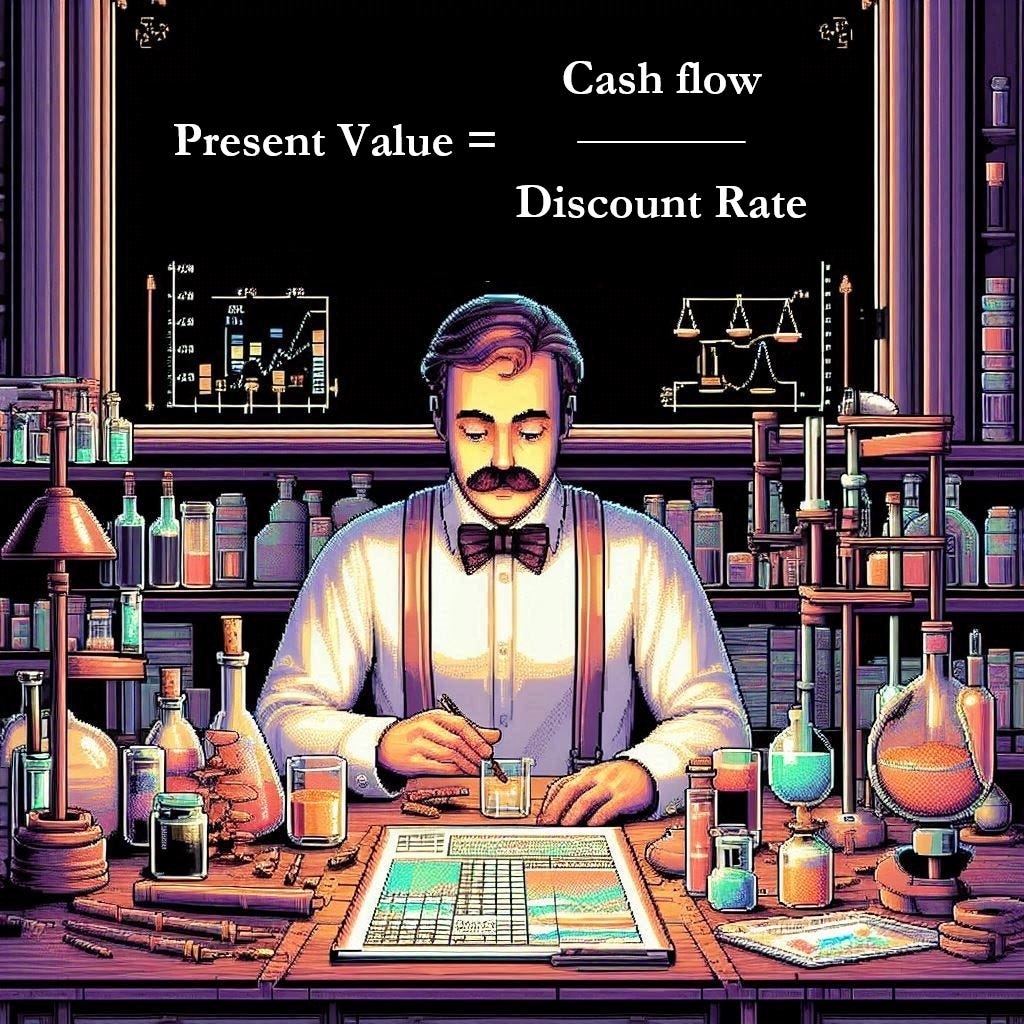Mastering Present Value: A Real Estate Investor’s Essential Guide
The real estate rental business operates on one fundamental principle: invest a significant amount of money upfront in exchange for a stream of payments or savings. The challenge is ensuring that the payments you expected actually materialize and are of the size you anticipated. If you rent a 2-bedroom house and know you can get $1,000 more per month in rent for an extra bedroom, how much profit could you expect from building that room?
While this is a complex problem, it is thankfully one that has been solved by economists and mathematicians for centuries. The concept of present value was arguably implicit in Liber Abaci (1202) by Leonardo of Pisa, also known as Fibonacci. The first mathematically accurate concept of present value is attributed to Dutch mathematician and political leader Johan de Witt, who sold age-based annuities to finance hostilities against France and England in the second half of the 17th century. Net Present Value (NPV) was formalized and popularized by Irving Fisher in his 1907 theory "The Rate of Interest."
With Net Present Value (NPV), you figure out if an investment is worth it by comparing the money you spend today with the money you'll get back in the future. Imagine you have $100K to invest now and you want to know if adding that bedroom is a better investment than leaving the money with the bank. NPV considers that money today is worth more than money in the future because it can be invested to earn more. It uses a special rate called the discount rate to adjust future money to its value today. If the NPV is positive, it means you'll make more money than leaving it in the bank, which is good. If it's negative, you'll lose money, which is bad. So, NPV helps you decide if an investment is a smart choice.
In the context of a project, we can evaluate large individual improvements to better understand the value of each investment, for more granularity. In our current project, there were a number of these improvements that we analyzed. A simple one to start with is the addition of washers and dryers to an apartment. Let’s start with the demand side perspective. If you were living in a one-bedroom apartment and could avoid having to go to the laundromat twice a month, spending a couple of hours each visit, and paying $20 to $30 to wash your clothes each time, you would probably be happy to pay an extra $100 in monthly rent. So, if you install a washer and dryer in a one-bedroom unit, how profitable will it be?
Let’s start with the easy part of the profit calculation, the cost. A little internet sleuthing should get you a good answer to your cost question. Here is a handy calculator. Since profit is just revenue minus cost, we need to use NPV to figure out how much the revenue is worth. Since we know a dollar today is worth more than a dollar tomorrow, we need to pick the rate at which we think this decrease in value will happen. This rate is referred to as the discount rate. Think about the discount rate as what you think you could get if you just invested the money in a super-safe investment like bonds. As a rule of thumb, most people in real estate use a 5% discount rate.
The math is surprisingly easy. The present value is the cash flow divided by the discount rate. If we receive $100 per month, we have $1,200 in annual revenue. By dividing the annual revenue by the 5% discount rate (0.05), we get a present value of $24K. But what does that mean? Does that mean that adding $100 to the rent would increase the price of a property by $24K? On average, yes. How do I know that is the case? Even though every econ 101 textbook teaches that equation, you can prove it relatively easily. In 2024, the average single-family home sold for an estimated $420,000 and the rent for $2,000. That equates to a discount rate of 4.7%, pretty darn close to our 5% rule.
Therefore, if adding a washer and dryer costs about $2,000 and increases the rent by $100, it generates nearly $22K in equity and recoups your initial investment in under two years. What does not show up on a traditional balance sheet is the reality that uncommon amenities can also dramatically decrease your vacancy rate. While most real estate investors model for a 5% vacancy rate, units with above-average amenities priced correctly for the market should experience a lower vacancy rate. In the markets we operate, we have kept our offerings in top-of-market condition. In turn, we have experienced an actual vacancy rate closer to 2.75% over the past two decades. I have not found any way to add that value into the return on investment model for a single amenity but know firsthand it is very profitable.
For perspective, every one percent decline in the vacancy rate translates to a one percent increase in the cap rate, which equates to profit. So, if you can add a couple of percentage points to your 8% cap rate, you now have five dollars for every four you had before. On aggregate, that mean the actual profitability derived from that single amenity could be significantly higher than $22K
Understanding Present Value (PV) is crucial for real estate investors because it allows them to make informed decisions about their investments. By evaluating the future cash flows of a property and discounting them to their present value, investors can determine whether an investment is worthwhile. This knowledge helps in comparing different investment opportunities and choosing the one that offers the best return. Continuous learning and applying these principles in real scenarios can significantly enhance an investor's ability to maximize profits and minimize risks. I encourage you to keep exploring and applying these concepts in your real estate ventures. Feel free to share your experiences or ask for personalized advice through the comments or contact forms. Your journey in real estate investment is a continuous learning process, and I'm here to support you every step of the way.
If you've found value in these insights and want to continue your journey of real estate wisdom, we invite you to subscribe to The Property Alchemist.
Don't let your real estate dreams remain just dreams. Empower yourself with the knowledge and insights that can turn your investment visions into concrete reality. Subscribe to The Property Alchemist today and take the first step towards becoming a master of real estate alchemy. Your next successful project is just a subscription away!




